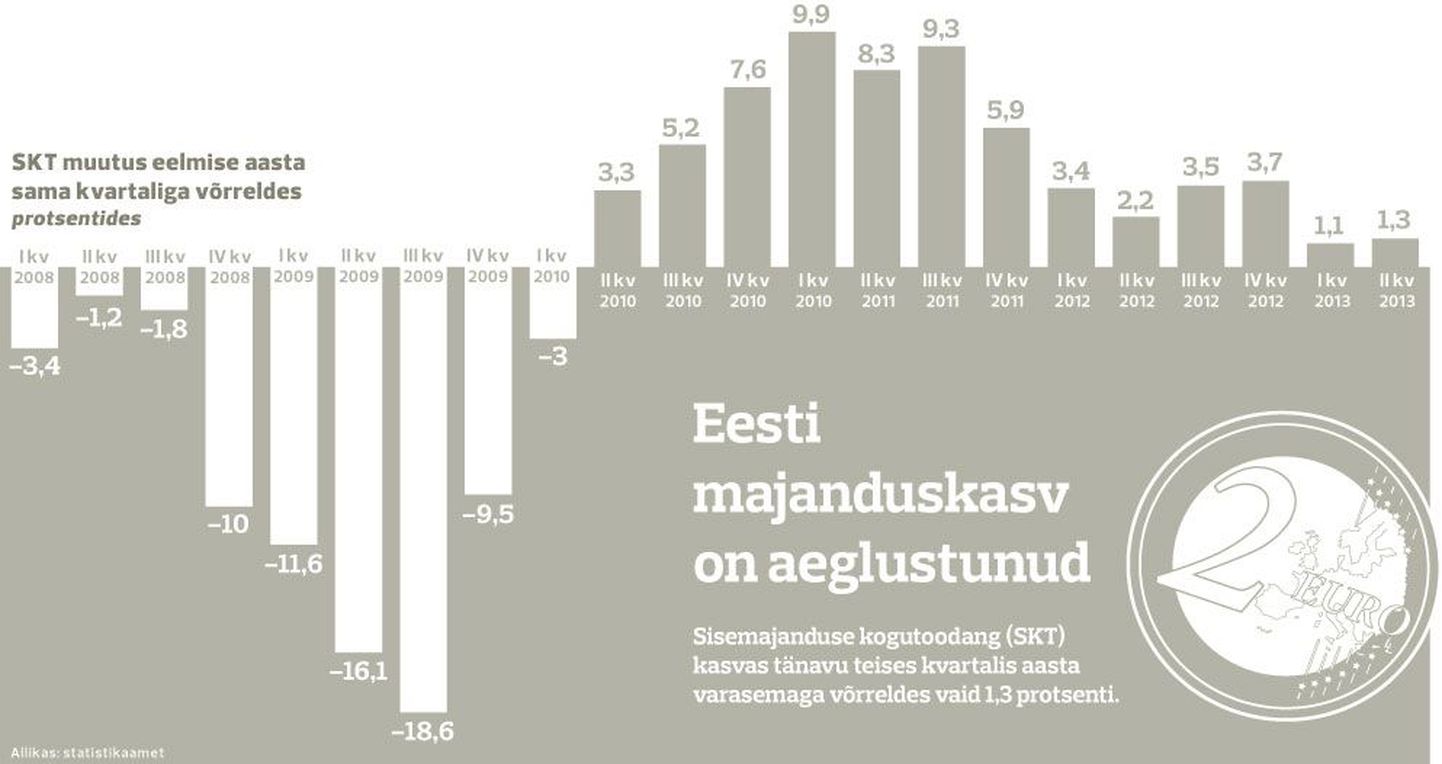
A mere 1.3 per cent of economic growth in second quarter confirms fears of analysts being overly optimistic at the beginning of the year.

A mere 1.3 per cent of economic growth in second quarter confirms fears of analysts being overly optimistic at the beginning of the year.
As revealed by Statistical Office yesterday, Estonia’s economy grew 1.3 per cent year-on-year, but only 0.1 per cent since first quarter. Thus, growth was basically lacking in second quarter. But at least there was no drop.
Economists are not too surprised, but having still hoped for and predicted a rosier picture, they will have to get busy substantially lowering the yearly forecast. While, at the start of the year, most predictions hovered around 3 per cent, they will now have to come down to 2 per cent.
As admitted to Estonian Public Broadcasting (ERR) radio news by Minister of Finance Jürgen Ligi, he is not satisfied with the 2nd quarter results. Mr Ligi added that the stalled growth will probably put an end to rapid rise of wages.
The main reason for Estonia’s stalled growth is poor results of foreign markets i.e. the largest trade partners.
As compared to 1st quarter, the Swedish economy dropped 0.1 per cent, growing only 0.6 per cent year-on-year. Finland’s economy has been in decline for a year now; the quarterly fall also amounting to 0.1 per cent at the start of the year. In the second quarter, Russia’s economic growth slowed to 1.2 per cent.
According to LHV economist Heido Vitsur, recession has deepened in global economy, especially in the euro area.
«The only success has been fending off immediate hazards. Therefore it is understandable that Estonia with its very open economy could not remain untouched by the general negative backdrop in world economy – even if at first it seemed that the negative developments will reach us with a longer lag,» he explained.
According to flash estimates by Statistical Office, Estonia’s 2nd quarter economic growth was hindered the most by decreased input by sewerage, waste management and remediation activities.
In the estimation of the Eesti Pank economist Kaspar Oja, consumption and investments growth – up to now upholding the Estonian – has slowed down during the past six months.
«One reason for slower investments growth is decrease in investments from quotas. Secondly, production capacity of numerous industrial enterprises has been underused for a while now, with expansion plans probably shelved,» described he.
Decline continues in construction, with the private sector unable to compensate for the considerable fall in public sector demand.
As admitted by finance ministry fiscal policy analyst Madis Aben, the last three years upward trend in consumer confidence might have turned, the consumers becoming somewhat cautious.
The slight growth was secured by industrial sector, supported by foreign demand; the greatest input coming from processing industry and energy. Trade and information and communications also did well.
Analysts are wary of the future, still trying to spot something positive. They talk of a rise in business confidence indicators and a stabilisation of the eurozone; from the second half year, they expect the current growth to continue or escalate slightly.
Even so, Mr Vitsur of LHV believes not in improvement in economic outlook in third quarter. «The European economic situation is unclear, with the economies of our main trade partners seems to be getting worse. At the same time, it cannot be excluded that new measures to stimulate the economies may provide a short-lived positive effect on our economy as well,» said he.
Estonian entrepreneurs, discussing our economy in Postimees at the start of August on the basis of their results, were also rather cautious, thinking it realistic to maintain last year’s levels.